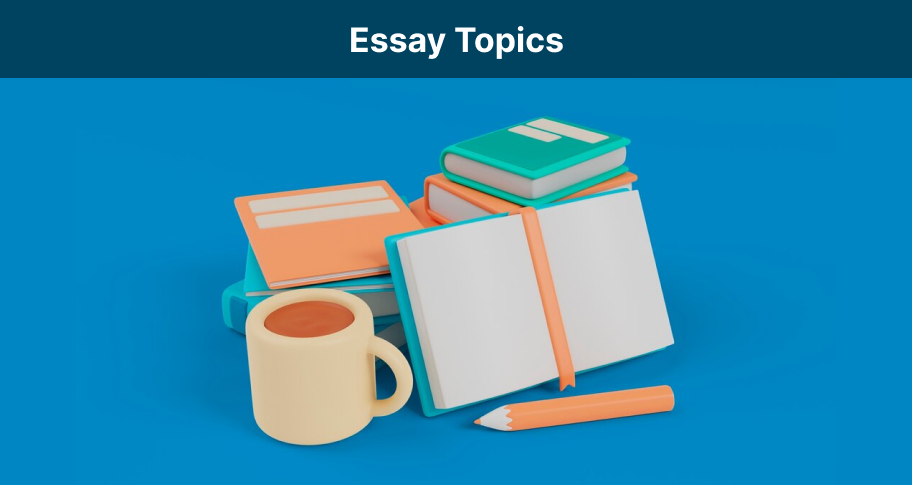Demystifying Abstract Writing
An abstract represents a concise, well-articulated summary of an academic piece or research. But writing an abstract goes beyond merely creating a summary. In this piece, we’ll delve into examples of abstracts to illuminate what they truly are, along with the necessary tone, style, and word counts.
You’ll also see how diverse abstract writing can be, tailored according to the subject area. For instance, an abstract for empirical research in the sciences contrasts greatly from that of a humanities article.
View 120,000+ High Quality Essay Examples
Learn-by-example to improve your academic writing
The Importance of Abstracts: Why Do We Write Them?
Every abstract you encounter, including our abstract writing example, has a few core characteristics. The primary role of an abstract is to encapsulate the essential points of a research article, much like a book’s back cover. The back jacket often influences whether you buy the book or not.
Similarly, academic papers are often behind paywalls, and the abstract assists readers in deciding if they should purchase the article. If you’re a student or researcher, the abstract helps you gauge whether the article is worth your time.
Furthermore, abstracts promote ongoing research in your field by incorporating keywords that allow others to locate your work. Knowing how to write a good abstract contributes to your professionalism, especially crucial for graduate-level studies. This skill might be vital when submitting your research to peer-reviewed journals or soliciting grant funding.
Breaking Down an Abstract: What’s Inside?
The contents of an abstract heavily rely on the type of study, research design, and subject area. An abstract may contain a succinct background statement highlighting the research’s significance, a problem statement, the methodologies used, a synopsis of the results, and the conclusions drawn.
When it comes to writing an abstract for a research paper, striking a balance between consciousness and informative detail is essential. Our examples of abstracts will help you grasp this balance better.
Moreover, you’ll learn how to format abstracts variably, matching the requirements of your degree program or publication guidelines.
Key Elements to Include in Your Abstract
- Brief Background: Introduce the importance of the research from your point of view.
- Problem Statement: Define the issue your research addresses, commonly referred to as the thesis statement.
- Methodology: Describe the research methods you employed.
- Synopsis: This should include a summary of your results and conclusions.
- Keywords: Implement terms that others will use to find your article.
Types of Abstracts
- Descriptive Abstracts: These give an overview of the source material without delving into results and conclusions.
- Informative Abstracts: These offer a more detailed look into your research, including the purpose, methods, results, and conclusions.
Remember
- Always write your abstract in the present tense.
- Keep track of word counts to maintain brevity.
- The original text should guide your abstract.
- Always provide a good synopsis in your abstract.
- If needed, use your abstract to draft a compelling query letter.
- Consider providing a literature review abstract if your research involves an extensive review of existing literature.
Types of Abstract
According to the Purdue Online Writing Lab resource, there are two different types of abstract: informational and descriptive.
Although informative and descriptive abstracts seem similar, they are different in a few key ways.
An informative abstract contains all the information related to the research, including the results and the conclusion.
A descriptive abstract is typically much shorter, and does not provide as much information. Rather, the descriptive abstract just tells the reader what the research or the article is about and not much more.
The descriptive abstract is more of a tagline or a teaser, whereas the informative abstract is more like a summary.
You will find both types of abstracts in the examples below.
Abstract Examples
Informative Abstract Example 1
Emotional intelligence (EQ) has been correlated with leadership effectiveness in organizations. Using a mixed-methods approach, this study assesses the importance of emotional intelligence on academic performance at the high school level.
The Emotional Intelligence rating scale was used, as well as semi-structured interviews with teachers. Participant grades were collected. Emotional intelligence was found to correlate positively with academic success. Implications for pedagogical practice are discussed.
Explanation
This is a typical informative abstract for empirical social sciences research. Most informative abstracts proceed in a logical fashion to reflect the organization of the main paper: with sections on the background, methods, results, and conclusions.
Informative Abstract Example 2
Social learning takes place through observations of others within a community. In diverse urban landscapes and through digital media, social learning may be qualitatively different from the social learning that takes place within families and tightly-knit social circles.
This study examines the differences between social learning that takes place in the home versus social learning that takes place from watching celebrities and other role models online. Results show that social learning takes place with equal efficacy. These results show that social learning does not just take place within known social circles, and that observations of others can lead to multiple types of learning.
Explanation
This is a typical informative abstract for empirical social science research. After the background statement, the author discusses the problem statement or research question, followed by the results and the conclusions.
Informative Abstract Example 3
Few studies have examined the connection between visual imagery and emotional reactions to news media consumption. This study addresses the gap in the literature via the use of content analysis. Content analysis methods were used to analyze five news media television sites over the course of six months.
Using the Yolanda Metrics method, the researchers ascertained ten main words that were used throughout each of the news media sites. Implications and suggestions for future research are included.
Explanation
This abstract provides an informative synopsis of a quantitative study on content analysis. The author provides the background information, addresses the methods, and also outlines the conclusions of the research.
Informative Abstract Example 4
This study explores the relationship between nurse educator theoretical viewpoints and nursing outcomes. Using a qualitative descriptive study, the researchers conducted face-to-face interviews with nursing students and nurse educators. The results show that nurse educator theoretical viewpoints had a direct bearing on nurse self-concept. Nurse educators should be cognizant of their biases and theoretical viewpoints when instructing students.
Explanation
This example showcases how to write an abstract for a qualitative study. Qualitative studies also have clearly defined research methods. Therefore, it is important to keep in mind the general principles of informative abstract writing. Always begin with the research question or problem statement, and proceed to offer a one-sentence description of study methods and results.
Informative Abstract Example 5
Aboriginal people have poorer health outcomes versus their counterparts from other ethnic groups. In this study, public health researchers conducted an epidemiological data analysis using results from the Transcultural Health Report. Using a chi-square test, the researchers found that there is a direct correlation between ethnicity and health status. Policymakers should consider introducing methods for reducing health disparities among minority groups.
Explanation
This informative abstract details the methods used in the report. As with other informative abstracts, it is written in the past tense. The abstract provides the reader with a summary of the research that has already been conducted.
Informative Abstract Example 6
We examine the contradictions of decolonization as official state policy. Using themes related to decolonization from the literature, we discuss how oppressed people develop cogent policies that create new systems of power. Intersectionality is also discussed.
Through a historical analysis, it was found that decolonization and political identity construction take place not as reactionary pathways but as deliberate means of regaining access to power and privilege. The cultivation of new political and social identities promotes social cohesion in formerly colonized nation-states, paving the way for future means of identity construction.
Explanation
This abstract is informative but because it does not involve a unique empirical research design, it is written in a different manner from other informative abstracts. The researchers use tone, style, and diction that parallels that which takes place within the body of the text. The main themes are elucidated.
Informative Abstract Example 7
Background
The implementation of a nationwide mandatory vaccination program against influenza in the country of Maconda was designed to lower rates of preventable illnesses. This study was designed to measure the cost-effectiveness of the mandatory vaccination program.
Methods
This is a cohort study designed to assess the rates of new influenza cases among both children (age > 8 years) and adults (age > 18 years). Using the National Reference Data Report of Maconda, the researchers compiled new case data (n = 2034) from 2014 to 2018.
Findings
A total of 45 new cases were reported during the years of 2014 and 2015, and after that, the number of new cases dropped by 74%.
Discussion
The significant decrease in new influenza cases can be attributed to the introduction of mandatory vaccination.
Interpretation
The mandatory vaccination program proves cost-effective given its efficacy in controlling the disease.
Explanation
This method of writing an informative abstract divides the content into respective subject headers. This style makes the abstract easier for some readers to scan quickly.
Informative Abstract Example 8
Mindfulness-based meditation and mindfulness-based stress reduction techniques have been shown to reduce burnout and improve employee engagement. Using a pretest/posttest design, the researchers randomly assigned nurses (n = 136) to the control and experimental groups. The Kabat-Zinn mindfulness-based stress reduction technique was used as the primary intervention for the experimental group.
Quantitative findings revealed significant improvements on self-report scales for depression and anxiety. Nurse leaders and administrators should consider implementing a mindfulness-based stress reduction program to reduce burnout and improve overall nurse performance.
Explanation
This abstract contains all the necessary information you would need to make an assessment of whether the research was pertinent to your study. When you are writing an informative abstract, consider taking one sentence from each of the sections in your research (introduction/background, methods, results, and conclusion).
Descriptive Abstract Example 1
What inspires individuals to become members of a new religious movement, or a “cult”? This review of the literature offers some suggestions as to the psychological and sociological motivations for joining a new religious movement, offering suggestions for future research.
Explanation
Unlike informative abstracts, descriptive abstracts simply alert the reader of the main gist of the article. Reading this abstract does not tell you exactly what the researchers found out about their subject, but it does let the reader know what the overall subject matter was and the methods used to conduct the research.
Descriptive Abstract Example 2
With few remaining survivors of the Holocaust, it becomes critical for historians to gather as much data that can contribute to an overall understanding of the ways trauma has been incorporated into identity. Interviews with five Holocaust survivors reveal new information about the role that art and music played in self-healing and community healing.
Explanation
This descriptive abstract does not give too much information away, simply telling the reader that the researcher used interviews and a case study research design. Although it is a brief description of the study, the researchers succinctly summarize the contents and results.
Descriptive Abstract Example 3
Absurdist theater and literature have had a strong influence on playwrights in France and England. This analysis of absurdist theater addresses the primary symbols being used in absurdist literature and traces the evolution of those symbols as they parallel historical events.
Explanation
As with most descriptive abstracts, this example is short. You can use descriptive abstracts to provide the reader with a summary of non-empirical research such as literary criticism.
Descriptive Abstract Example 4
The architecture of Oscar Niemeyer reflects socialist sensibilities in the urban planning of Brasilia. This research explores the philosophical underpinnings of Niemeyer’s design through an analysis of several of the main elements of the National Congress of Brazil. Implications and influences of Niemeyer’s work are also discussed.
Explanation
Note how with the descriptive abstract, you are writing about the research in a more abstract and detached way than when you write an informative abstract.
Descriptive Abstract Example 5
Jacques Derrida has written extensively on the symbolism and the metonymy of September 11. In this research, we critique Derrida’s position, on the grounds that terrorism is better understood from within a neo-realist framework. Derrida’s analysis lacks coherence, is pompous and verbose, and is unnecessarily abstract when considering the need for a cogent counterterrorism strategy.
Explanation
Like most descriptive abstracts, this encapsulates the main idea of the research but does not necessarily follow the same format as you might use in an informative abstract. Whereas an informative abstract follows the chronological format used in the paper you present, with introduction, methods, findings, and conclusion, a descriptive abstract only focuses on the main idea.
Descriptive Abstract Example 6
The Five Factor model of personality has been well established in the literature and is one of the most reliable and valid methods of assessing success. In this study, we use the Five Factor model to show when the qualities of neuroticism and introversion, which have been typically linked with low rates of success, are actually correlated with achievement in certain job sectors. Implications and suggestions for clinicians are discussed.
Explanation
This descriptive abstract does not discuss the methodology used in the research, which is what differentiates it from an informative abstract. However, the description does include the basic elements contained in the report.
Descriptive Abstract Example 7
This is a case study of a medium-sized company, analyzing the competencies required for entering into the Indian retail market. Focusing on Mumbai and Bangalore, the expansion into these markets reveals potential challenges for European firms. A comparison case with a failed expansion into Wuhan, China is given, offering an explanation for how there are no global cross-cultural competencies that can be applied in all cases.
Explanation
While this descriptive abstract shows the reader what the paper addresses, the methods and results are omitted. A descriptive abstract is shorter than an informative abstract.
Which Type of Abstract Should I Use?
Check with your professors or academic advisors, or with the editor of the peer-reviewed journal before determining which type of abstract is right for you.
If you have conducted original empirical research in the social sciences, you will most likely want to use an informative abstract.
However, when you are writing about the arts or humanities, a descriptive abstract might work best.
What Information Should I Include in An Abstract?
The information you include in the abstract will depend on the substantive content of your report.
Consider breaking down your abstract into five separate components, corresponding roughly with the structure of your original research.
You can write one or two sentences on each of these sections:
For Original Empirical Research
1. Background/Introductory Sentence
If you have conducted, or are going to conduct, an original research, then consider the following elements for your abstract:
What was your hypothesis?
What has the previous literature said about your subject?
What was the gap in the literature you are filling with your research?
What are the research questions?
What problem are you trying to solve?
What theoretical viewpoint or approach did you take?
1. Methods
What was your research design (qualitative, quantitative, multi-factorial, mixed-methods)?
What was the setting? Did you conduct a clinical analysis? Or did you conduct a systematic review of literature or a meta-analysis of data?
How many subjects were there?
How did you collect data?
How did you analyze the data?
What methodological weaknesses need to be mentioned?
III. Results
If this was a qualitative study, what were the major findings?
If this was a quantitative study, what were the major findings? Was there an alpha coefficient? What was the standard deviation?
Were the results statistically significant?
1. Discussion
Did the results prove or disprove the hypothesis?
Were the results significant enough to inform future research?
How do your results link up with previous research? Does your research confirm or go beyond prior literature?
1. Conclusions/Recommendations
What do your results say about the research question or problem statement?
If you had to make a policy recommendation or offer suggestions to other scholars, what would you say?
Are there any concluding thoughts or overarching impressions?
Writing Abstracts for Literary Criticism and Humanities Research
Writing abstracts for research that is not empirical in nature does not involve the same steps as you might use when composing an abstract for the sciences or social sciences.
When writing an abstract for the arts and humanities, consider the following outline, writing one or two sentences for each section:
1. Background/Introduction
What other scholars have said before.
Why you agree or disagree.
Why this is important to study.
1. Your methods or approach
How did you conduct your research?
Did you analyze a specific text, case study, or work of art?
Are you comparing and contrasting?
What philosophical or theoretical model did you use?
III. Findings
What did you discover in the course of your research?
1. Discussion/Conclusion
How are your findings meaningful?
What new discoveries have you made?
How does your work contribute to the discourse?
General Tips for Writing Abstracts
The best way to improve your abstract writing skills is to read more abstracts. When you read other abstracts, you will understand more about what is expected, and what you should include or leave out from the abstract.
Reading abstracts helps you become more familiar with the tone and style, as well as the structure of abstracts.
Write your abstract after you have completed your research.
Many successful abstracts actually take the first sentence from each section of your research, such as the introduction/background, review of literature, methods, results, discussion, and conclusion.
Although it is a good idea to write the results of your original research, avoid giving too much detail. Instead, focus on what really matters.
A good abstract is like an elevator pitch.
While there is no absolute rule for how long an abstract should be, a general rule of thumb is around 100-150 words. However, some descriptive abstracts may be shorter than that, and some informative abstracts could be longer.
How to Write a Synopsis
Writing a synopsis involves summarizing a work’s key elements, including the narrative arc, major plot points, character development, rising action, and plot twists. Here’s a step-by-step guide on how to create a compelling synopsis.
- Outline the Narrative Arc: Start by defining your story’s beginning, middle, and end. This includes the introduction, rising action, climax, falling action, and resolution.
- Identify Major Plot Points: Major plot points are crucial events that propel your story forward. Identify these critical moments and explain how they contribute to the narrative arc.
- Discuss Character Development: Characters are the backbone of your story. Describe your characters at the start of the story and demonstrate how they evolve by the end.
- Illustrate Rising Action: The rising action is a series of events that lead to the climax of your story. Ensure to discuss these events and how they build suspense and momentum.
- Include Plot Twists: If your story has unexpected turns or surprises, highlight these plot twists in your synopsis. However, ensure these twists aren’t revealed too abruptly.
Remember, a synopsis should provide a complete overview of your story. It’s different from a teaser or back cover blurb — your objective isn’t to create suspense, but to succinctly present the whole narrative.
How Long Should a Summary Be
The length of a summary varies based on the complexity and length of the original work. However, as a rule of thumb, a summary should ideally be no more than 10-15% of the original text’s word count. This ensures you cover the significant plot points, character development, narrative arc, rising action, and plot twists without going into excessive detail.
For instance, if you’re summarizing a 300-page novel, your summary may be about 30 pages. If you’re summarizing a short 5-page article, a half-page to one-page summary should suffice.
Remember, the goal of a summary is to condense the source material, maintaining the core ideas and crucial information while trimming unnecessary details. Always aim for brevity and clarity in your summaries.
Conclusion
Abstracts are even shorter versions of executive summaries. Although abstracts are brief and seem relatively easy, they can be challenging to write. If you are struggling to write your abstract, just consider the main ideas of your original research paper and pretend that you are summarizing that research for a friend.
If you would like more examples of strong abstracts in your field of research, or need help composing your abstract or conducting research, call a writing tutor.
References
“Abstracts,” (n.d.). The Writing Center. https://writingcenter.unc.edu/tips-and-tools/abstracts/
Koopman, P. (1997). How to write an abstract. https://users.ece.cmu.edu/~koopman/essays/abstract.html
University of Massachusetts, Amherst (n.d.). Writing an abstract.
“Writing Report Abstracts,” (n.d.). Purdue Online Writing Lab. https://owl.english.purdue.edu/owl/resource/656/1/





